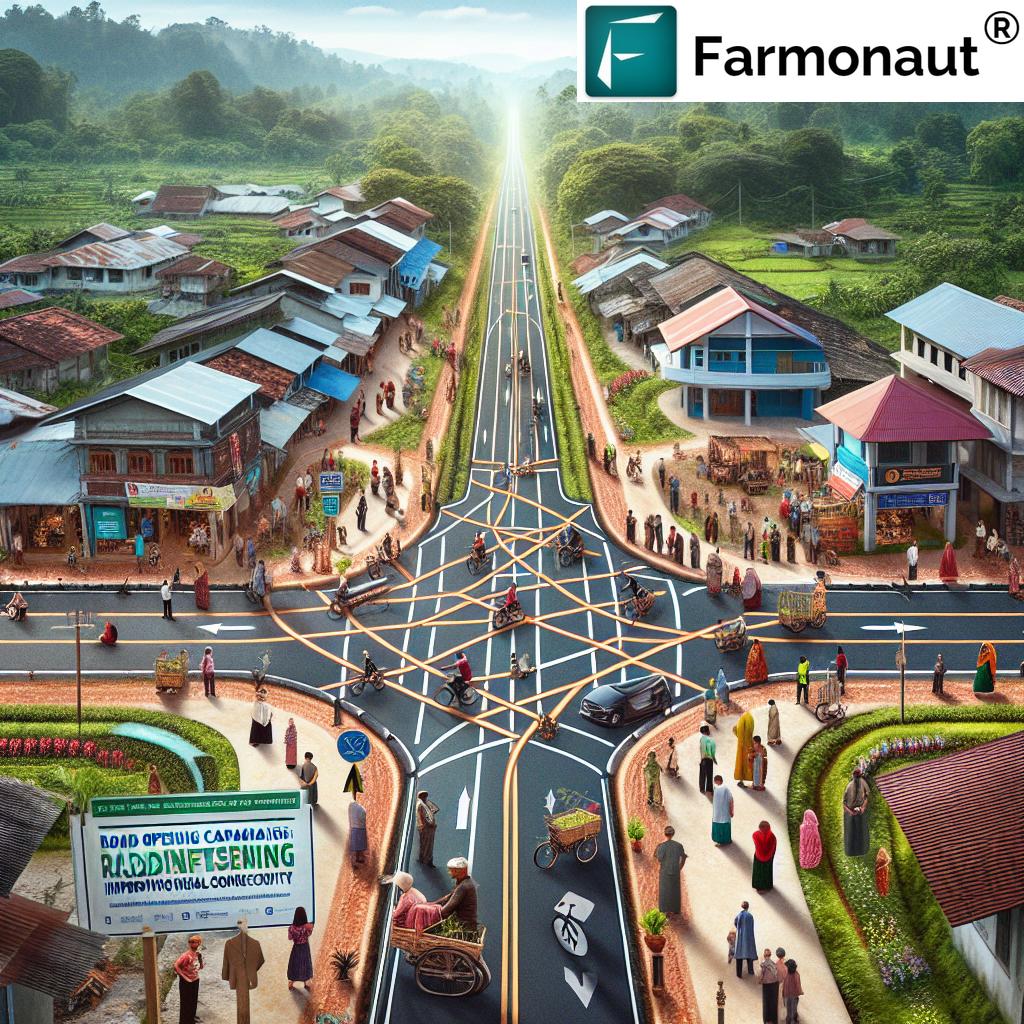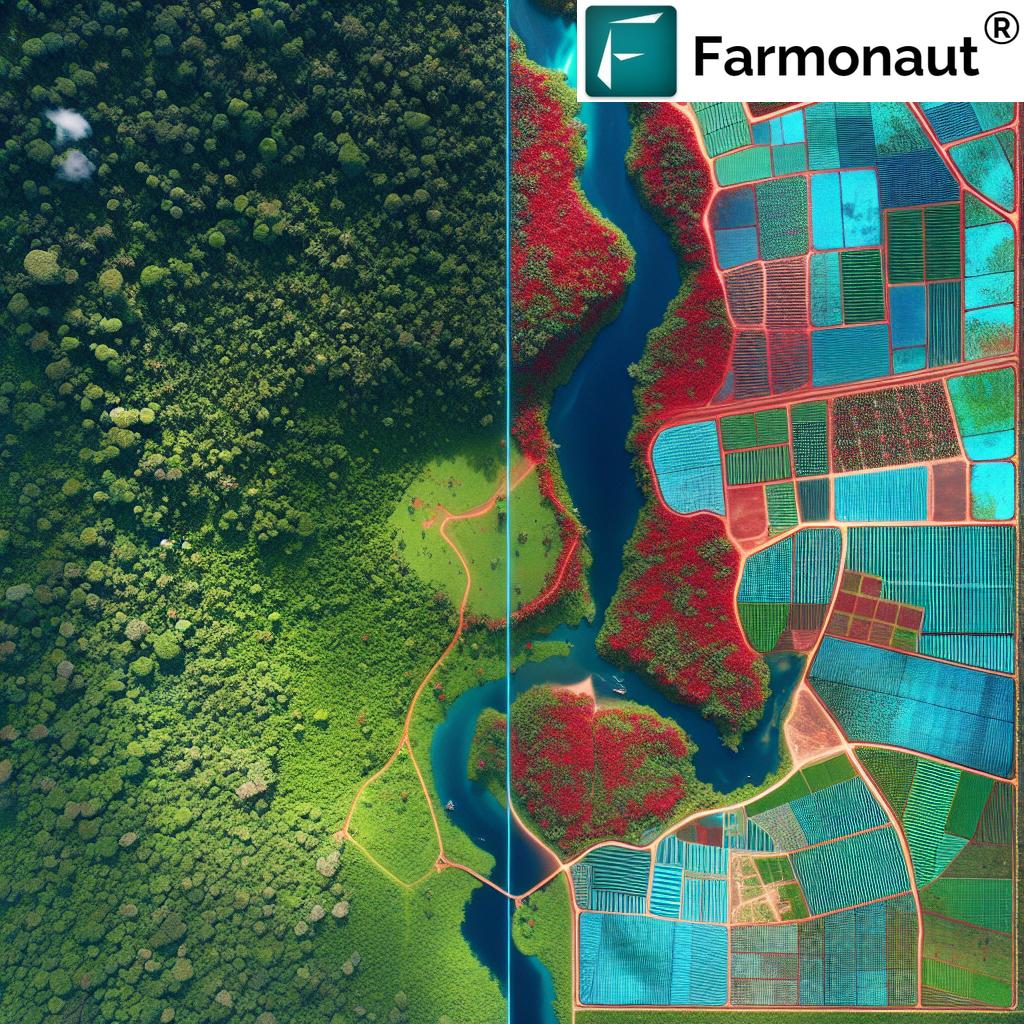Rasta Kholo Abhiyan: Transforming Jaipur’s Rural Connectivity for Sustainable Development
“Rasta Kholo Abhiyan has reopened over 600 roads in Jaipur and surrounding districts, improving rural connectivity.”
In the heart of Rajasthan, a revolutionary campaign is reshaping the landscape of rural connectivity and sustainable development. The Rasta Kholo Abhiyan, spearheaded by the visionary leadership of Dr. Jitendra Kumar Soni, District Collector of Jaipur, is addressing long-standing issues of road encroachment and blocked public pathways. This innovative initiative is not just about clearing roads; it’s about paving the way for progress, empowering communities, and fostering sustainable growth in rural areas.
Understanding Rasta Kholo Abhiyan: A Path to Progress
The Rasta Kholo Abhiyan, which translates to “Open the Road Campaign,” is a multifaceted approach to improving rural infrastructure and connectivity. At its core, this campaign focuses on three primary objectives:
- Removing unauthorized encroachments
- Improving public mobility
- Strengthening road infrastructure in rural areas
By addressing these key areas, the initiative aims to enhance accessibility, reduce legal disputes, and contribute to the sustainable development of rural Jaipur and surrounding districts.

The Driving Force: Dr. Jitendra Kumar Soni’s Vision
Dr. Jitendra Kumar Soni, the District Collector of Jaipur, has been the catalyst behind this transformative campaign. His proactive and strategic approach has been instrumental in conceptualizing and executing the Rasta Kholo Abhiyan. With a clear vision for better public infrastructure, Dr. Soni has:
- Coordinated with multiple government departments
- Engaged law enforcement agencies
- Collaborated with municipal bodies
- Mobilized local communities
This collaborative effort has ensured the successful implementation of the campaign across various districts.
Strategic Implementation: A Multi-Pronged Approach
The success of Rasta Kholo Abhiyan lies in its strategic implementation. Here’s how the campaign is making a difference:
- Comprehensive Road Inspections: Dr. Soni personally oversees road inspections, identifying key problem areas that require immediate attention.
- Legal and Administrative Actions: The campaign facilitates necessary legal and administrative actions to remove encroachments effectively and efficiently.
- Resource Mobilization: By leveraging various government resources, the initiative ensures that all required tools and manpower are available for the task.
- Transparency and Public Trust: The campaign prioritizes transparency in its operations, fostering public trust and encouraging community participation.
- Awareness Campaigns: Extensive awareness drives urge citizens to voluntarily remove encroachments and cooperate with authorities for the greater good.
This multi-faceted approach has led to significant achievements, making Rasta Kholo Abhiyan a model for addressing similar challenges across India.
Impressive Milestones: Quantifying Success
The impact of Rasta Kholo Abhiyan is best understood through its impressive achievements:
| Metric | Value | Impact |
|---|---|---|
| Roads Reopened | ~600 | Improved connectivity |
| People Benefited | ~250,000 | Enhanced mobility |
| Districts Covered | 3+ (Jaipur, Alwar, Nagaur) | Widespread implementation |
| Rural Areas Connected | Numerous | Increased accessibility |
| Encroachments Removed | Hundreds | Improved road infrastructure |
| Community Engagement Events | Multiple | Increased public awareness |
| Government Agencies Involved | Several | Coordinated effort |
| Economic Impact | Significant | Boost to local economy |
| Environmental Benefits | Notable | Sustainable development |
These numbers reflect the tangible impact of the campaign on the ground, demonstrating its effectiveness in transforming rural connectivity.
Beyond Jaipur: Success Stories from Alwar and Nagaur
The success of Rasta Kholo Abhiyan extends beyond the boundaries of Jaipur. Under Dr. Soni’s leadership, the campaign has made significant strides in other districts as well:
- Alwar: The campaign facilitated the removal of encroachments on critical farm roads, significantly improving rural connectivity.
- Nagaur: Over 38 cases were resolved in a single day, leading to the reopening of 3.6 km of disputed roads, some of which had been inaccessible for over 33 years.
These achievements underscore the campaign’s potential to create lasting change across multiple districts, serving as a blueprint for rural development initiatives.
Leveraging Technology for Sustainable Development
While Rasta Kholo Abhiyan focuses on physical infrastructure, it’s worth noting how technology can complement such initiatives for sustainable rural development. Companies like Farmonaut are at the forefront of this technological revolution in agriculture, offering innovative solutions that can indirectly support initiatives like Rasta Kholo Abhiyan.
Farmonaut’s satellite-based farm management solutions, accessible via Android, iOS, and web applications, as well as through their API, provide valuable tools for rural communities. These technologies can help:
- Optimize agricultural practices
- Improve resource management
- Enhance decision-making for farmers
By integrating such technological solutions with infrastructure improvements like those brought about by Rasta Kholo Abhiyan, we can create a more holistic approach to rural development.

“The campaign has directly benefited more than 250,000 people by addressing road encroachment issues in rural areas.”
Impact on Rural Communities: A Closer Look
The Rasta Kholo Abhiyan has had a profound impact on rural communities, extending far beyond mere road clearance. Let’s delve into the multifaceted benefits this campaign has brought to the people of Jaipur and surrounding districts:
- Enhanced Mobility: With over 600 roads reopened, residents now enjoy improved access to essential services, markets, and educational institutions.
- Economic Growth: Better connectivity has stimulated local economies by facilitating easier transport of goods and services.
- Emergency Response: Cleared roads have significantly improved the efficiency of emergency services, potentially saving lives.
- Social Cohesion: The campaign has brought communities together, fostering a sense of collective responsibility and civic pride.
- Agricultural Benefits: Farmers now have better access to markets, potentially increasing their income and reducing post-harvest losses.
These improvements align well with the broader goals of sustainable rural development, creating a ripple effect of positive change throughout the region.
Challenges and Solutions: Navigating the Road Ahead
While the Rasta Kholo Abhiyan has achieved remarkable success, it hasn’t been without its challenges. Understanding these obstacles and the strategies to overcome them is crucial for the campaign’s continued success and potential replication in other regions.
Key Challenges:
- Resistance from some encroachers
- Legal complexities in certain cases
- Resource constraints in some areas
- Balancing development with environmental concerns
Innovative Solutions:
- Community Engagement: Intensifying awareness campaigns and involving local leaders to build consensus.
- Legal Support: Strengthening the legal team to expedite case resolutions and provide clear guidelines.
- Resource Optimization: Leveraging technology for efficient resource allocation and management.
- Sustainable Practices: Incorporating eco-friendly road construction methods and materials.
By addressing these challenges head-on, the Rasta Kholo Abhiyan continues to evolve and improve, setting a benchmark for similar initiatives across India.
The Role of Technology in Supporting Rural Development Initiatives
While the Rasta Kholo Abhiyan focuses on physical infrastructure, technological advancements can play a crucial role in complementing and enhancing such initiatives. For instance, companies like Farmonaut offer innovative solutions that can indirectly support rural development efforts:
- Satellite-Based Crop Monitoring: Helps farmers optimize their practices, potentially increasing yield and income.
- AI-Driven Advisory Systems: Provide personalized recommendations, improving agricultural efficiency.
- Blockchain-Based Traceability: Enhances trust in agricultural supply chains, benefiting both farmers and consumers.
These technological tools, when combined with improved rural connectivity, can create a powerful synergy for sustainable development.


Future Prospects: Scaling the Success of Rasta Kholo Abhiyan
The success of the Rasta Kholo Abhiyan in Jaipur, Alwar, and Nagaur has set a promising precedent for rural development initiatives across India. As we look to the future, several key areas emerge for potential expansion and improvement:
- Geographical Expansion: Extending the campaign to more districts and states, adapting the model to suit local needs and challenges.
- Technology Integration: Incorporating advanced technologies like GIS mapping and drone surveys for more efficient encroachment detection and road planning.
- Policy Framework: Developing a comprehensive policy framework to prevent future encroachments and maintain cleared roads.
- Public-Private Partnerships: Exploring collaborations with private sector entities to bring in additional resources and expertise.
- Skill Development: Training local youth in road maintenance and related skills, creating employment opportunities alongside improved infrastructure.
By focusing on these areas, the Rasta Kholo Abhiyan can evolve into a nationwide model for sustainable rural development, transforming lives and landscapes across India.
Community Empowerment: The Heart of Rasta Kholo Abhiyan
At its core, the Rasta Kholo Abhiyan is about more than just clearing roads; it’s about empowering communities. This aspect of the campaign deserves special attention:
- Civic Responsibility: The campaign has instilled a sense of ownership and responsibility among citizens towards public infrastructure.
- Participatory Approach: Local communities are actively involved in identifying encroachments and supporting removal efforts.
- Education and Awareness: Regular awareness programs educate citizens about the importance of unobstructed public pathways.
- Conflict Resolution: The initiative has helped resolve long-standing disputes, fostering community harmony.
This community-centric approach ensures the sustainability of the campaign’s achievements, creating lasting change in rural areas.
Environmental Considerations in Road Development
While improving rural connectivity is crucial, it’s equally important to consider the environmental impact of such initiatives. The Rasta Kholo Abhiyan demonstrates awareness of this balance:
- Minimal Ecological Disruption: Focusing on reopening existing roads rather than creating new ones minimizes environmental impact.
- Green Infrastructure: Incorporating green elements like roadside plantations to offset any necessary vegetation removal.
- Sustainable Materials: Exploring the use of eco-friendly materials in road repair and construction.
- Water Management: Implementing proper drainage systems to prevent water logging and soil erosion.
These considerations ensure that the campaign contributes to sustainable development in the truest sense, balancing progress with environmental preservation.

The Economic Ripple Effect
The economic impact of the Rasta Kholo Abhiyan extends far beyond immediate infrastructure improvements. Let’s explore the broader economic benefits:
- Increased Market Access: Farmers and local businesses can now reach wider markets more easily, potentially increasing their income.
- Tourism Boost: Improved connectivity can attract more tourists to rural areas, stimulating local economies.
- Job Creation: The campaign itself has created jobs in road clearance and maintenance, while better connectivity opens up new employment opportunities.
- Real Estate Value: Areas with improved accessibility often see an increase in property values, benefiting local residents.
- Investment Attraction: Better infrastructure can attract more businesses and investments to rural areas, further driving economic growth.
These economic benefits create a positive feedback loop, supporting further development and improving the overall quality of life in rural communities.
Leveraging Technology for Rural Development
While the Rasta Kholo Abhiyan focuses on physical infrastructure, integrating technological solutions can further enhance rural development efforts. Here’s how technology can complement such initiatives:
- Satellite-Based Monitoring: Tools like those offered by Farmonaut can help in land use planning and monitoring changes in rural landscapes.
- Digital Connectivity: Improved roads can be complemented by better digital infrastructure, enabling access to e-governance services and online education.
- Smart Agriculture: With better connectivity, farmers can leverage precision agriculture technologies to optimize their practices.
- Telemedicine: Enhanced road networks coupled with digital connectivity can improve access to healthcare through telemedicine services.
By embracing these technological advancements, rural areas can leapfrog into a new era of development, bridging the urban-rural divide more effectively.
Earn With Farmonaut: Earn 20% recurring commission with Farmonaut’s affiliate program by sharing your promo code and helping farmers save 10%. Onboard 10 Elite farmers monthly to earn a minimum of $148,000 annually—start now and grow your income!
Frequently Asked Questions (FAQ)
- What is the Rasta Kholo Abhiyan?
It’s a campaign launched in Jaipur to remove unauthorized encroachments, improve public mobility, and strengthen rural road infrastructure. - Who is leading this initiative?
Dr. Jitendra Kumar Soni, the District Collector of Jaipur, is spearheading this campaign. - How many roads have been reopened so far?
Over 600 roads have been reopened as part of this initiative. - What are the main challenges faced by the campaign?
Key challenges include resistance from encroachers, legal complexities, and resource constraints in some areas. - How does this campaign benefit rural communities?
It enhances mobility, stimulates economic growth, improves emergency response times, and fosters social cohesion. - Is the campaign limited to Jaipur?
No, it has also shown success in other districts like Alwar and Nagaur. - How does the campaign address environmental concerns?
It focuses on reopening existing roads, incorporates green infrastructure, and explores the use of sustainable materials. - Can technology play a role in supporting such initiatives?
Yes, technologies like satellite-based monitoring and digital connectivity can complement and enhance the impact of such infrastructure improvements.
Conclusion: Paving the Way for a Brighter Future
The Rasta Kholo Abhiyan stands as a shining example of how targeted, well-executed initiatives can transform rural landscapes and lives. By addressing the fundamental issue of road connectivity, this campaign has unlocked pathways to progress, both literal and metaphorical.
As we’ve explored, the impact of this initiative extends far beyond mere road clearance. It has:
- Empowered communities
- Stimulated local economies
- Improved access to essential services
- Fostered a sense of civic responsibility
- Set a precedent for sustainable rural development
The success of Rasta Kholo Abhiyan in Jaipur, Alwar, and Nagaur serves as an inspiration and a model for other regions facing similar challenges. It demonstrates that with visionary leadership, community involvement, and strategic implementation, significant positive change is possible.
As we look to the future, the potential for scaling this initiative and integrating it with technological advancements offers exciting possibilities for rural development across India. The Rasta Kholo Abhiyan is not just about opening roads; it’s about opening doors to opportunity, progress, and a better quality of life for millions of rural citizens.
In the journey towards sustainable development and rural empowerment, initiatives like Rasta Kholo Abhiyan are crucial stepping stones. They remind us that sometimes, the path to progress begins with something as fundamental as a clear road.













